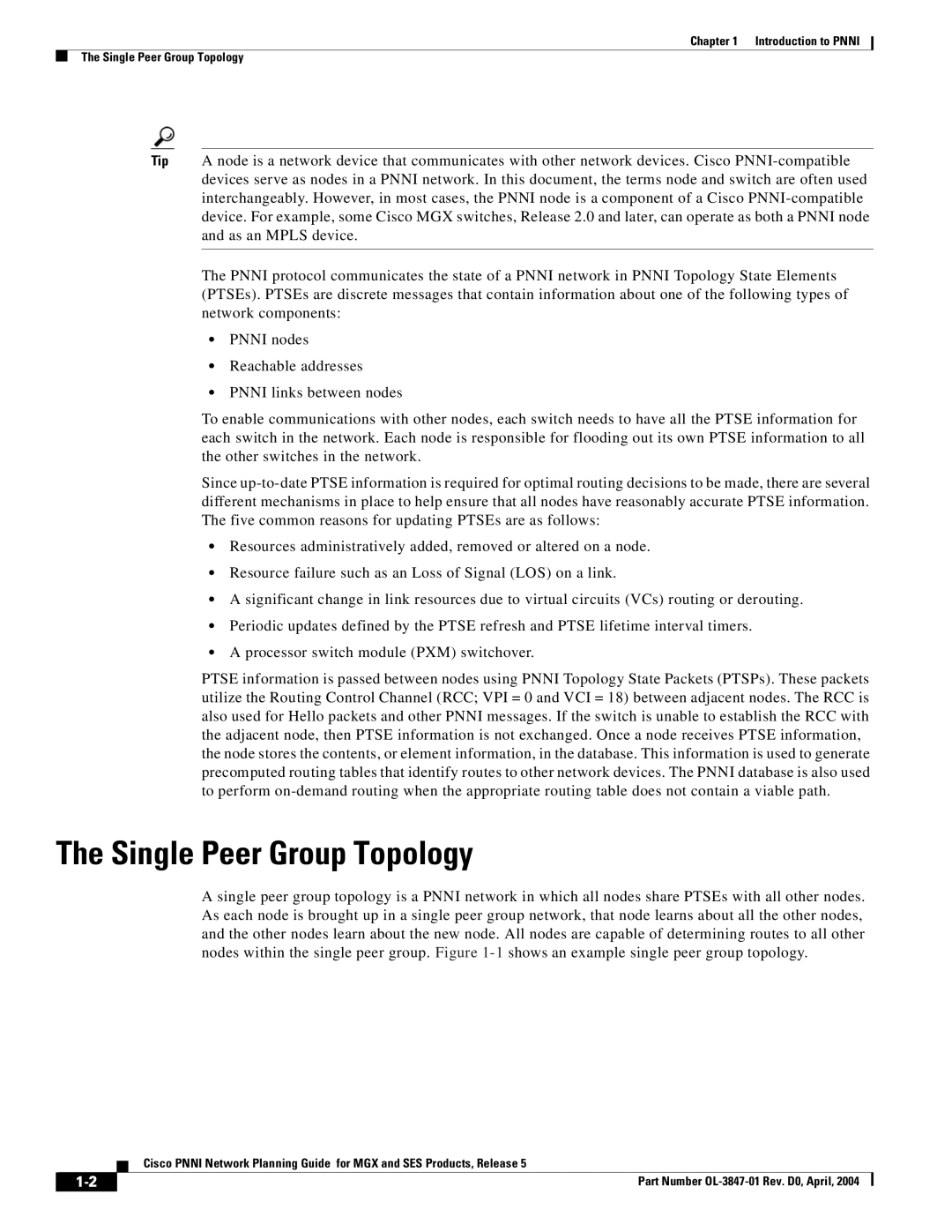
Chapter 1 Introduction to PNNI
The Single Peer Group Topology
Tip A node is a network device that communicates with other network devices. Cisco
The PNNI protocol communicates the state of a PNNI network in PNNI Topology State Elements (PTSEs). PTSEs are discrete messages that contain information about one of the following types of network components:
•PNNI nodes
•Reachable addresses
•PNNI links between nodes
To enable communications with other nodes, each switch needs to have all the PTSE information for each switch in the network. Each node is responsible for flooding out its own PTSE information to all the other switches in the network.
Since
•Resources administratively added, removed or altered on a node.
•Resource failure such as an Loss of Signal (LOS) on a link.
•A significant change in link resources due to virtual circuits (VCs) routing or derouting.
•Periodic updates defined by the PTSE refresh and PTSE lifetime interval timers.
•A processor switch module (PXM) switchover.
PTSE information is passed between nodes using PNNI Topology State Packets (PTSPs). These packets utilize the Routing Control Channel (RCC; VPI = 0 and VCI = 18) between adjacent nodes. The RCC is also used for Hello packets and other PNNI messages. If the switch is unable to establish the RCC with the adjacent node, then PTSE information is not exchanged. Once a node receives PTSE information, the node stores the contents, or element information, in the database. This information is used to generate precomputed routing tables that identify routes to other network devices. The PNNI database is also used to perform
The Single Peer Group Topology
A single peer group topology is a PNNI network in which all nodes share PTSEs with all other nodes. As each node is brought up in a single peer group network, that node learns about all the other nodes, and the other nodes learn about the new node. All nodes are capable of determining routes to all other nodes within the single peer group. Figure
| Cisco PNNI Network Planning Guide for MGX and SES Products, Release 5 |
Part Number |
